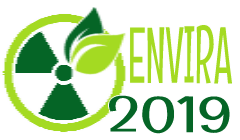Decades post the Chernobyl nuclear disaster, wild boar meat consistently displayed alarming levels of radioactivity. The enigma endured: an overlooked factor had long eluded scientists. This so-called “wild boar paradox,” which baffled experts for years, has been finally unraveled, revealing a surprising link to nuclear weapons tests from the 1960s.
The legacy of the Chernobyl nuclear disaster in 1986 profoundly affected the forest ecosystem across Central Europe. Post-accident, mushroom consumption was advised against due to heightened radioactive contamination, with the meat of wild creatures also registering concerning levels of radioactivity. Although radioactivity in deer and roe deer diminished over the years, wild boar meat exhibited persistently elevated radiation levels, frequently surpassing safe consumption limits. This persistent anomaly has now been decoded, thanks to intricate measurements undertaken by TU Wien (Vienna) and Leibniz University of Hannover.
Tracing the Origins of Persistent Radiation
Prof. Georg Steinhauser of TU Wien noted:
“The most pivotal element contributing to the sample radioactivity is cesium-137, which has a half-life of roughly 30 years. Logically, half of it would decay naturally after this period.”
Generally, radiation in food diminishes much faster since, over time, cesium becomes dispersed, gets washed away by rain, binds with minerals, or migrates deeper into the soil. Therefore, plants and animals don’t assimilate the same quantities as they did immediately post the Chernobyl disaster. However, the radioactivity in wild boar meat bafflingly remains near constant, defying this expected rapid decline.
Curiously, current wild boar meat samples sometimes exceed acceptable radiation limits, potentially contributing to the reduced hunting of these animals. Their consequent overpopulation frequently inflicts extensive damage upon agriculture and forestry.
Driven by this conundrum, Prof. Georg Steinhauser and his team embarked on a quest for precision. They aspired to determine not merely the quantity but also the origin of the radioactivity. Dr. Bin Feng, associated with Leibniz Universität Hannover and the TRIGA Center Atominstitut at TU Wien, elucidated:
“Different radioactive isotope sources exhibit distinct physical fingerprints.”
By analyzing the ratio of cesium-137 to cesium-135, the origin of the radioactive material can be discerned.
Despite challenges in accurately quantifying cesium-135 due to its extended half-life, the team’s endeavors bore fruit. Their findings unveiled that while the majority of cesium-137 in Central Europe is Chernobyl-derived, the wild boar samples showed a substantial portion linked to the nuclear weapons testing from the 1960s – reaching up to 68% in certain instances.
At the heart of revelation lies the wild boar’s preference for deer truffles
These subterranean fungi accumulate radioactive cesium after prolonged periods. As Steinhauser explained:
“Cesium very slowly migrates downwards, sometimes at a mere one millimeter annually.”
Deer truffles, located 20-40 centimeters deep, are currently absorbing cesium released during Chernobyl. In contrast, cesium from earlier nuclear weapons tests had reached these depths long ago.
This intricate web of interactions underscores the multifaceted dynamics of natural ecosystems and how deer truffles, and consequently wild boars, are impacted by multiple cesium sources over time. Steinhauser concluded:
“The persistent contamination of wild boar meat isn’t likely to wane soon, as some Chernobyl cesium is just now being absorbed by truffles. This study epitomizes the complex interplay within nature, but it also affirms that persistent inquiry can indeed unearth solutions to longstanding mysteries.”
